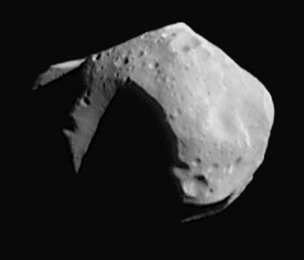Why Study Asteroids?

The scientific interest in asteroids is due largely to their status as the remnant debris from the inner solar system formation process. Because some of these objects can collide with the Earth, asteroids are also important for having significantly modified the Earth’s biosphere in the past. They will continue to do so in the future. In addition, asteroids offer a source of volatiles and an extraordinarily rich supply of minerals that can be exploited for the exploration and colonization of our solar system in the twenty-first century.
Asteroids represent the bits and pieces left over from the process that formed the inner planets, including Earth. Asteroids are also the sources of most meteorites that have struck the Earth’s surface and many of these meteorites have already been subjected to detailed chemical and physical analyses. If certain asteroids can be identified as the sources for some of the well-studied meteorites, the detailed knowledge of the meteorite’s composition and structure will provide important information on the chemical mixture, and conditions from which the Earth formed 4.6 billion years ago. During the early solar system, the carbon-based molecules and volatile materials that served as the building blocks of life may have been brought to the Earth via asteroid and comet impacts. Thus the study of asteroids is not only important for studying the primordial chemical mixture from which the Earth formed, these objects may hold the key as to how the building blocks of life were delivered to the early Earth.
On a daily basis, the Earth is bombarded with tons of interplanetary material. Many of the incoming particles are so small that they are destroyed in the Earth’s atmosphere before they reach the ground. These particles are often seen as meteors or shooting stars. The vast majority of all interplanetary material that reaches the Earth’s surface originates as the collision fragments of asteroids that have run into one another some eons ago. With an average interval of about 100 years, rocky or iron asteroids larger than about 50 meters would be expected to reach the Earth’s surface and cause local disasters or produce the tidal waves that can inundate low lying coastal areas. On an average of every few hundred thousand years or so, asteroids larger than a mile could cause global disasters. In this case, the impact debris would spread throughout the Earth’s atmosphere so that plant life would suffer from acid rain, partial blocking of sunlight, and from the firestorms resulting from heated impact debris raining back down upon the Earth’s surface. The probability of an asteroid striking the Earth and causing serious damage is very remote but the devastating consequences of such an impact suggests we should closely study different types of asteroids to understand their compositions, structures, sizes, and future trajectories.
The asteroids that are potentially the most hazardous because they can closely approach the Earth are also the objects that could be most easily exploited for raw materials. These raw materials could be used in developing the space structures and in generating the rocket fuel that will be required to explore and colonize our solar system in the twenty-first century. By closely investigating the compositions of asteroids, intelligent choices can be made as to which ones offer the richest supplies of raw materials. It has been estimated that the mineral wealth resident in the belt of asteroids between the orbits of Mars and Jupiter would be equivalent to about 100 billion dollars for every person on Earth today.




